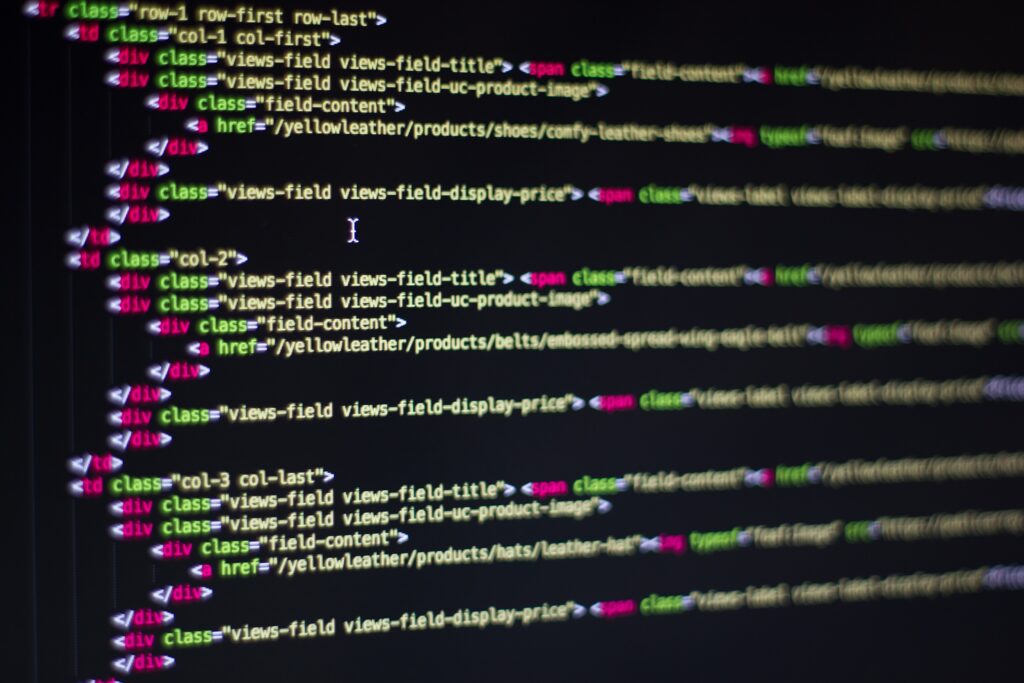Are you curious about the differences between Functional Programming and Object-Oriented Programming (OOP)? Programming paradigms classify languages based on their features and approach to solving problems. Functional programming focuses on composing pure functions to build software while avoiding side effects and mutable data. On the other hand, OOP is about organising software design and data around classes and objects. Learn more about the principles and concepts of each paradigm and their advantages in our latest post. Which approach do you prefer?
A programming paradigm is a strategy that solves a programming complication using a programming language and classifies programming languages based on their features. There are many known programming languages, and all must follow an approach when implemented. This approach is known as a paradigm.
Programming Languages are classified into numerous paradigms. Some paradigms are concerned mainly with the implications for the language’s execution model, such as allowing side effects or defining the sequence of operations by the execution model. Others deal with the code organisation, such as assembling code into units with the state modified by the code, yet others are agitated by the style of syntax and grammar.
Many programming languages would instead offer multi-paradigm programming than strictly follow one. However, it generally comes down to the developer’s preferences and the application’s goals.
There are many programming paradigms, such as logic programming, procedural, and others. But today, emphasis is put on Functional programming and Object-Oriented programming. Let’s explore!

FUNCTIONAL PROGRAMMING
Functional programming is building software by composing pure functions, averting shared state, mutable data and side effects. Functional programming is a declarative programming paradigm based on pure functions. Usually, these functions don’t modify variables but create new ones as an output. The output of a pure function entirely depends on the input parameters, which limits external impact and avoids side effects.
Functional programming languages are designed to manipulate symbolic computation and list processing applications. Programming languages that support functional programming include JavaScript, Python, Scala, and Racket.
Unlike the imperative style, functional programming mainly focuses on “what to solve” through expressions. An expression is evaluated to produce a value.
Concepts of functional programming
- Pure functions
A function is a process that repossesses a data input, processes it and delivers an output. Functions are components of code designed to achieve specific tasks. Pure functions possess two principal properties. First, pure functions consistently generate the same result for the same argument values regardless of the environment. Secondly, pure functions do not have side effects because they do not modify local static variables, mutable reference arguments, input streams or other external aspects.
Advantages
- Pure functions have no side effects, making programmes built using functional programming easy to debug.
- Pure functions also make it easier to write parallel or concurrent applications.
- Pure functions are easily tested since all it takes is to test the input and confirm the expected result.
- Since pure functions are independent, refactoring them within the code is more effortless. Their independence makes them portable and easier to reuse in other applications.

Therefore, pure functions are portable, recyclable and straightforward pieces of code that are exceedingly practical when implementing a program, making them the central functional programming unit.
2. Recursion
Iteration or looping in functional programming is implemented through recursion. Recursive functions call on themselves, repeating the operation until it reaches the base case. Recursion requires maintaining a stack, which consumes space linearly to the depth of recursion. This could make recursion expensive to use instead of imperative loops.
3. Referential Transparency
Functional programs don’t have assignment statements. If you have to store some value, you define new variables instead. This eliminates side effects because any variable can be replaced with its corresponding value at any execution point without changing the program’s behaviour, making functional programs referentially transparent. This feature allows you to substitute a pure function with a different implementation depending on the context.

Therefore, functional programming has many benefits, such as being optimum transparent, enhancing values readability and using pure functions with no side effects. Functional programming is used in many programming languages and frameworks because of its capacity to design maintainable and clean software through the use of pure functions which have no side effects and produce the same output.
OBJECT-ORIENTED PROGRAMMING
Object-oriented programming is an imperative programming paradigm that organises software design and data based on the concept of classes and objects. It is used to structure software programs into easy and recyclable code patterns commonly known as classes. The primary purpose of object-oriented programming is to put together data and functions so that no other component of the code can access this data except that function.
Object-oriented programming focuses on manipulating objects rather than the logic needed to control them. This method is best for large, complex and actively updated programs. These programs include mobile applications and manufacturing and design programs. Object-oriented programming is also essential in manufacturing system simulation software.
Many widely used programs are multi-paradigm and support object-oriented programming, usually combined with procedural and imperative programming. Outstanding object-oriented languages include Java, C++, Python, Object Pascal, plus Objective-C.
Concepts of Object-Oriented Programming
Classes and Objects
The concept of classes and objects is the essence of object-oriented programming composed of functions and data. Classes and objects break down an extensive system into real-world abstractions that can structure a basis for analysis and design. During the analysis phase, objects and classes are determined. The determined objects and classes in the analysis phase are refined during the design phase.
Classes
A class is a set of instructions that initiates a data structure for a particular object, ascertaining the variables that can exist in an object, how it will behave and member functions that define how to operate on the variables. Each class represents a collection of objects with familiar attributes and operations. Classes own their data members and member functions, accessed and used by generating an instance of that class. A class acts as the blueprint for objects, attributes and methods. If a class is defined, no memory is allocated, but if it’s instantiated, memory is allocated, creating an object.

Objects
Objects are instances of classes created with mainly defined data. An object issues a public interface to other code that it wants to use while maintaining its private internal state. This simply means that objects can interrelate without code or data details. Objects act as the basic units of object-oriented programming and represent real-life entities. An object must have;
- An identity: objects must possess a unique name and ID, which allows objects to interrelate with each other.
- A state: An object’s state reflects the attributes or features of an object.
- Behaviour: these are the object’s methods and how they respond and interact with each other.
Every object consists of data and code to control the data. When a program is executed, objects interrelate by sending messages to each other.

Principles of Object-Oriented Programming
As discussed above, object-oriented programming relies on the concept of objects and classes and it’s used to structure software programs into accessible and reusable pieces of code patterns. The fundamental principles of object-oriented programming include Encapsulation, Inheritance, Abstraction and Polymorphism. In conjunction, they operate as the working philosophy of any object-oriented programming.
4. Encapsulation
Encapsulation is where an object inside a class maintains its state private and only selected information is exposed. Encapsulation bundles data and the methods that operate on that data into a single unit. Encapsulation privately hides the internal software code implementation inside a class and hides the internal data of inside objects.
This principle requires that you define some fields as either private or public.
- Public /external interface
Methods and properties are accessible from outside of the class.
- Private/internal interface
Methods and properties are accessible by other methods of the same class.
Encapsulation is crucial because it enables a programmer to change the internal implementation of an object without having to locate and update all the code that uses it. Encapsulation also creates a firewall between the object and the rest of the system.

- Inheritance
Inheritance is the ability of an object or existing class to derive properties and characteristics of another object. When writing a class, you inherit properties from other classes. Therefore, you don’t need to write these properties and functions repeatedly. This means that you have reusability at your advantage, as you can reuse the fields and methods of the existing class without having to rewrite the code in a program. Inheritance is crucial since it comes up with a procedure to organise and structure the software. Inheritance avoids duplication of the same code and reduces the chances of error and data redundancy.
- Abstraction
Abstraction is the procedure where you hide implementation data and details and only reveal the relevant data to the user. Hiding such data is very important as it reduces the program’s complexity. With data abstraction, users won’t have to be concerned with the complex logic behind the program as they interact only with selected attributes and methods of an object. You protect data from exposure through abstraction since it only reveals selected data and allows it to be accessed through classes and methods. This concept also helps developers to make advancements in the program quickly.
- Polymorphism
Here, objects are structured to share the same behaviours and can have more than just one form. Polymorphism allows different types of objects to pass through the same interface. It also allows the same method to execute different behaviours in two ways;
- Method Overriding: here, a child class provides a different implementation than its parent class.
- Method overloading: Multiple functions of the same name are created but with different implementations.
There are two types of polymorphism; Static polymorphism and Dynamic polymorphism.
Static polymorphism can be achieved by method overloading and Dynamic polymorphism is achieved through method overriding.

Conclusion
Object-oriented programming and functional programming are two of the most popular programming paradigms. Both paradigms were structured to help developers create effective and efficient applications with different approaches.
Both paradigms have different approaches, so most developers would instead implement hybrid solutions based on the project’s requirements and goals.


